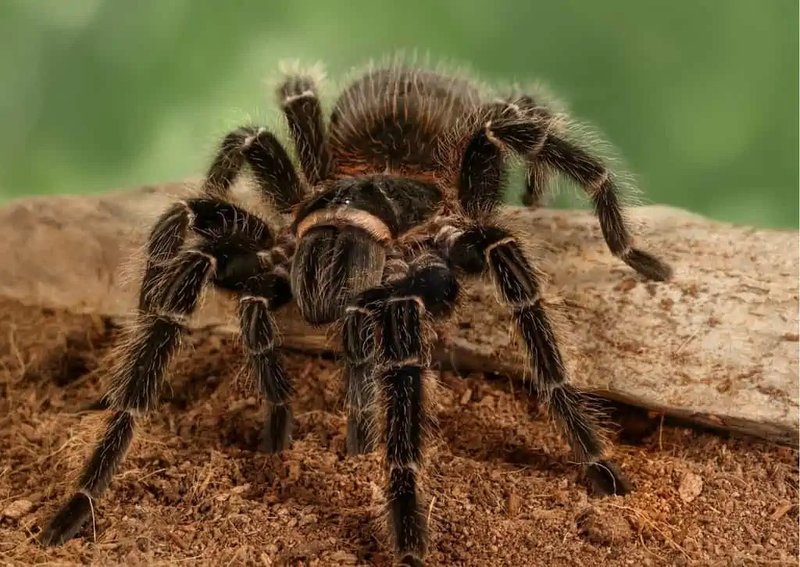
These unique actions play a crucial role in their communication and defense strategies. So, whether you’re a curious beginner or just someone who’s intrigued by these eight-legged wonders, let’s dive into the world of tarantula behavior and explore why they drum or kick hairs.
Understanding Tarantula Communication
Tarantulas might not speak in words, but they have their own language. They communicate through body movements and sound. When you observe a tarantula, you might notice them drumming their front legs on the ground. This action produces vibrations that can travel through the substrate, alerting other tarantulas nearby to their presence. It’s kind of like sending a text message, but without any words!
This drumming isn’t just random; it often serves specific purposes. For example, male tarantulas may drum as part of their courtship ritual to attract females. It’s a way to signal, “Hey, I’m here, and I’m looking for a mate!” In this context, drumming can be crucial for survival—the better they communicate, the better their chances of reproductive success.
Why Do Tarantulas Drum?
Now, you might be wondering why exactly tarantulas drum. Well, it comes down to a mix of environmental factors and specific social scenarios. There are a few key reasons:
- Attracting Mates: Male tarantulas often use drumming as courtship behavior to get the attention of females.
- Establishing Territory: Drumming can help mark territory, letting others know who’s in charge of a particular area.
- Warning Signals: In some cases, drumming can serve as a warning to potential threats, signaling, “Back off!”
Each of these reasons taps into the tarantula’s instinct to survive and thrive in their environment. Picture them as musicians playing their own unique tunes to convey important messages to those around them.
The Role of Kicking Hairs in Defense
In addition to drumming, tarantulas have another interesting behavior: they kick off tiny hairs from their abdomen. You might be thinking, “What’s the deal with that?” Well, it’s all about defense. These hairs, known as urticating hairs, can be a tarantula’s secret weapon against predators.
When feeling threatened, a tarantula can quickly kick these hairs into the air. If a predator gets too close, these small, itchy hairs can cause irritation and discomfort. It’s like throwing a handful of tiny darts! This defensive mechanism helps the tarantula escape danger while putting up a formidable front.
How Urticating Hairs Work
So, how do these urticating hairs actually work? Imagine being poked with a bunch of tiny needles—that’s similar to what these hairs can feel like to a predator. Here’s how it goes down:
- Location: The urticating hairs are primarily located on the tarantula’s abdomen.
- Firing Mechanism: When a tarantula feels threatened, it can quickly rub its back legs against its abdomen to kick these hairs outwards.
- Immediate Effect: If the hairs touch the skin or mucous membranes of a predator, it can cause irritation, leading the predator to back off.
This clever strategy allows tarantulas to defend themselves without needing to rely solely on their size or strength.
Behavior in Different Species
It’s also important to note that tarantula behavior can vary from one species to another. Some may drum more often than others, while certain species are more likely to rely on kicking hairs for defense. For instance, the Goliath birdeater is known for its fierce defensive tactics, while the Chilean rose might be more prone to drumming as part of its display behavior.
Through observing these behaviors, enthusiasts can better understand the unique personalities of different tarantula species. It’s like getting to know a friend’s quirks—each species has its own mix of characteristics that make them special.
What to Consider as a Tarantula Owner
If you’re thinking about owning a tarantula or already have one, it’s crucial to understand these behaviors. Recognizing when your tarantula is drumming or preparing to kick hairs can help you create a more comfortable environment for your pet.
Here are a few tips for handling and caring for tarantulas:
- Minimize Stress: Keep handling to a minimum, especially if you notice your tarantula drumming or kicking hairs.
- Safe Environment: Provide plenty of hiding spaces and a suitable habitat to reduce stress.
- Observation: Spend time observing their behavior from a distance to better understand their needs and preferences.
By being mindful of their behavior, you can ensure a positive experience for both you and your tarantula.
The Importance of Understanding Behavior
Understanding tarantula behavior isn’t just for enthusiasts; it’s essential for anyone interested in these critters. Knowledge about why they drum or kick hairs helps demystify their actions and allows for better care practices.
Plus, it opens up an exciting world of observation. Watching your tarantula drum can be like watching a live performance in your home! The more you know, the more you can appreciate the complexity of these fascinating creatures.
In conclusion, tarantulas may seem simple at first glance, but their behaviors reveal a rich tapestry of communication and survival strategies. Whether they’re drumming to attract a mate or kicking hairs to ward off predators, each action tells a story. By understanding these behaviors, you not only become a better pet owner but also a more informed admirer of the incredible world of tarantulas.

